#space
Text

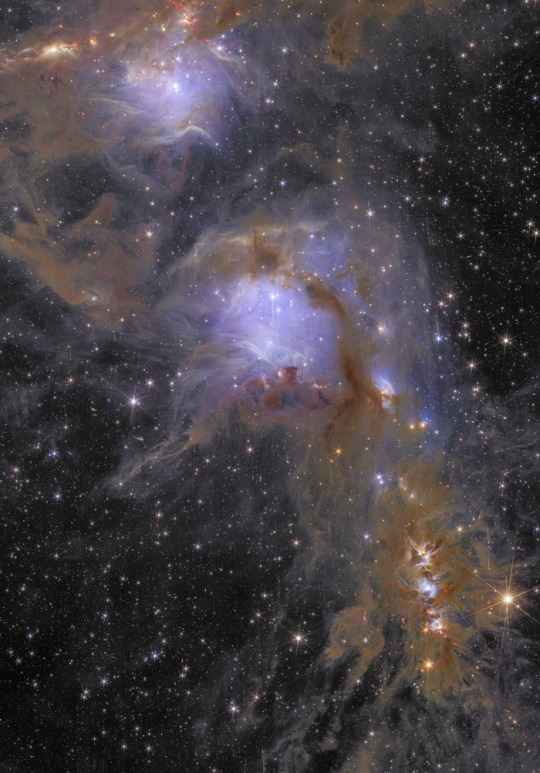
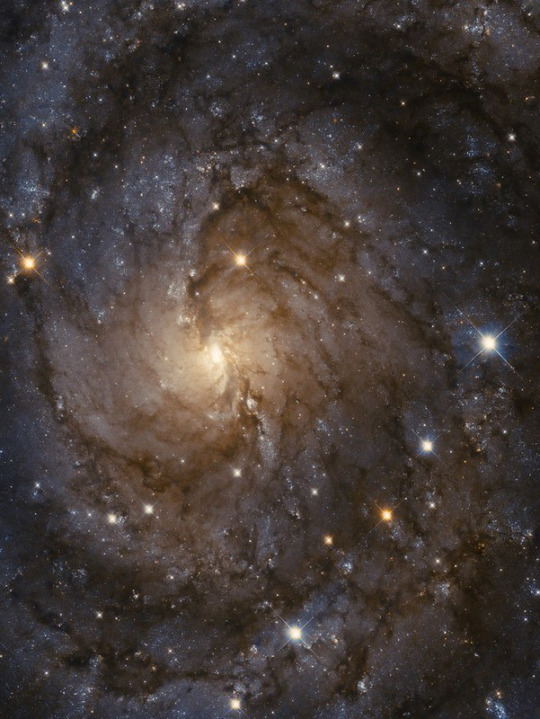
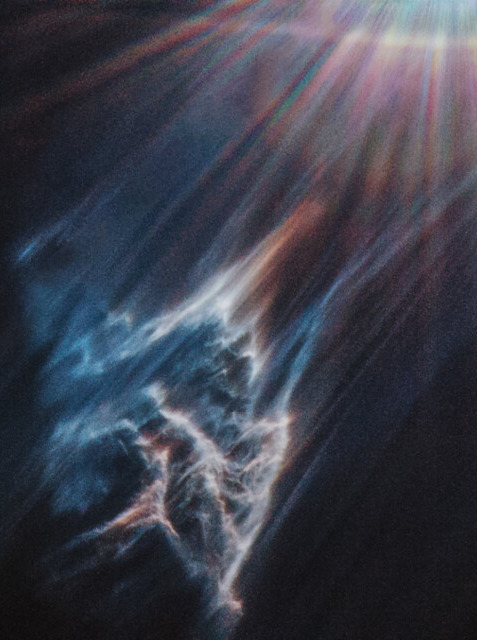




Voices from distant stars l Judy Schmidt/NASA/ESA
#space#astrophotography#astronomy#universe#messier 78#galaxy#planets#night#sky#solar system#butterfly nebula#supernova remnant
1K notes
·
View notes
Text

Oh man I really gave myself a lot to do on this ref, but I'm thrilled with how it came out! Triton is a very old oc I love with all my heart
718 notes
·
View notes
Text
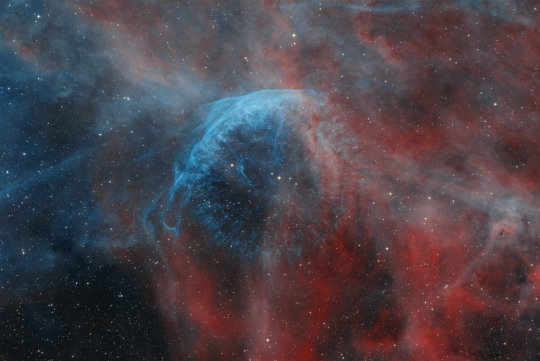
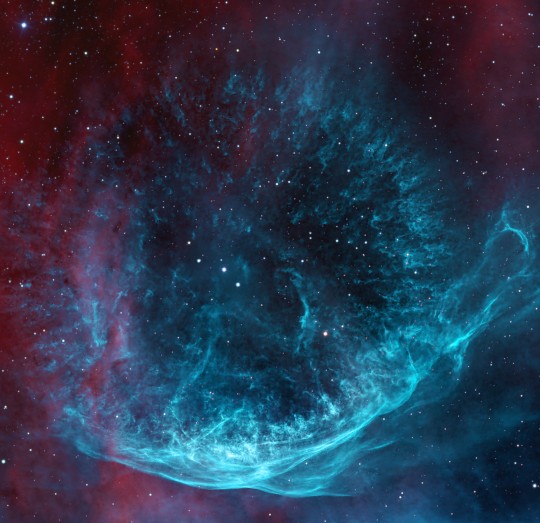
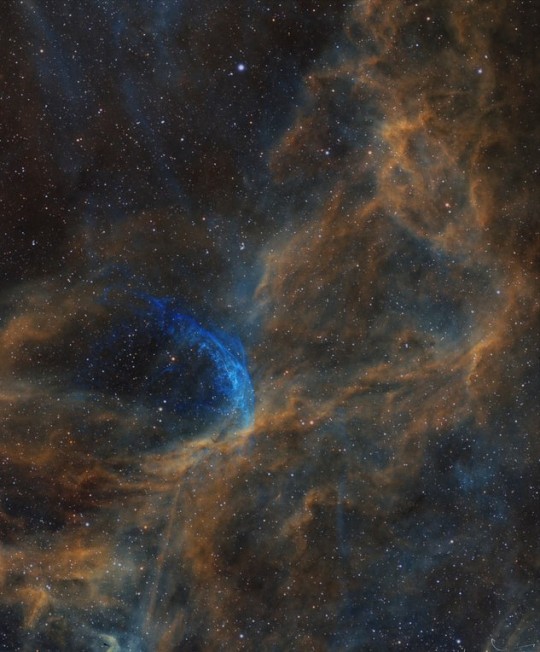
WR 134, Cygnus
832 notes
·
View notes
Photo

Nebula by Ivan Stan
#art#illustration#digital art#dark art#horror#fantasy#macabre#surreal#space#character design#creature design
556 notes
·
View notes
Text
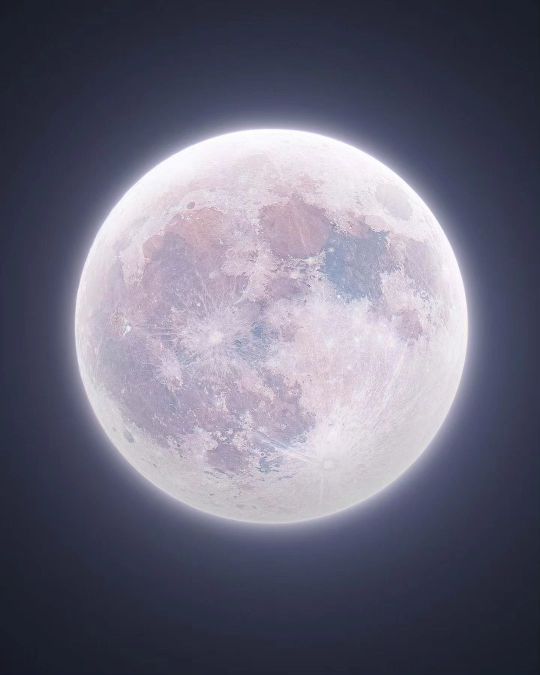
Luna, Earth's only natural satellite ©
#moon#full moon#space#astrophotography#nasa#stars#night sky#solar system#earth#astronomy#galaxy#planet#flower moon
346 notes
·
View notes
Text
Roughly 1,000 light-years from Earth, there is a cosmic structure known as IRAS 23077+6707 (IRAS 23077) that resembles a giant butterfly.
Ciprian T. Berghea, an astronomer with the US Naval Observatory, originally observed the structure in 2016 using the Panoramic Survey Telescope and Rapid Response System (Pan-STARRS). To the surprise of many, the structure has remained unchanged for years, leading some to question what IRAS 2307 could be.
Recently, two international teams of astronomers made follow-up observations using the Submillimeter Array at the Smithsonian Astrophysical Observatory (SAO) in Hawaii to better understand IRAS 2307.
Continue Reading.
#Science#Space#Astronomy#Physics#Astrophysics#Planetary Science#Stars#Protoplanetary Disks#IRAS 23077
100 notes
·
View notes
Text
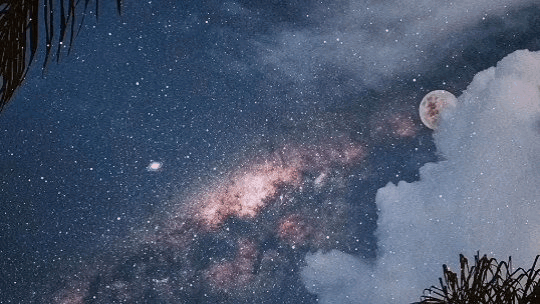
#gif#aesthetic#nature#art nature#scenery#view#pretty#stars#moon#cloudscape#space#beautiful#landscape#clouds#cottagecore#sky#meadow#moodboard#field#inspo#icons#night photography#nature photography#trees#meadowcore#spring#sunrise#mountains#explore#art aesthetic
126 notes
·
View notes
Text

Many Moons she spent
Warm and all--
Alone
Watching her friends
Watch the shadows.
Many days she wasted
Blowing smoke in faces
But still
They watched
The shadows.
Undeterred but impatient
She counted down the days till'
She set fire to the cave and--
Watched it
Burn.
-RJ
#poetry#manifesting#numerology#poems#ttpd#taylor swift#kendrick lamar#sacred geometry#age of aquarius#the tortured poets department#Plato#greek mythology#mythology and folklore#allegory#space#astrology#physics
107 notes
·
View notes
Text

Space food samples from the U.S. Army's Natick Laboratory in Massachusetts.
97 notes
·
View notes
Text
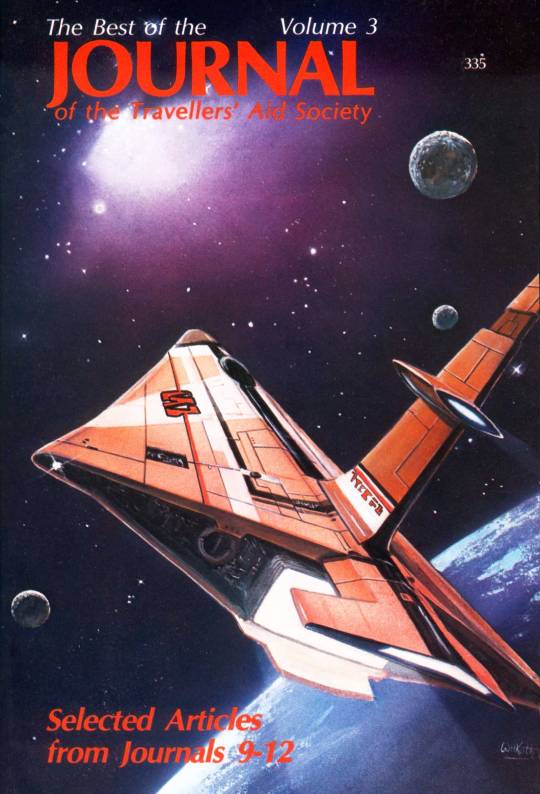
Out to the black (William H Keith Jr cover for The Best of the Journal of the Travellers' Aid Society Vol 3, 1982)
#Traveller#William H Keith Jr#The Journal of the Travellers' Aid Society#sci fi#William H Keith#spaceship#GDW#Game Designers' Workshop#space#planet#Journal of the Travellers' Aid Society#The Best of the Journal of the Travellers' Aid Society
77 notes
·
View notes
Text

A Lunar Corona over Paris via NASA APOD
#cloudy moon#colorful#moon#lunar corona#space#nasa#apod#astrophotography#astronomy#universe#france#paris#earth#planets#solar system
94 notes
·
View notes
Text
91 notes
·
View notes
Text
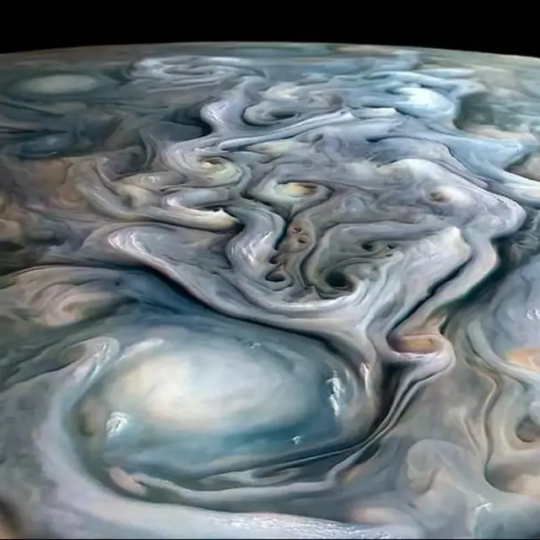

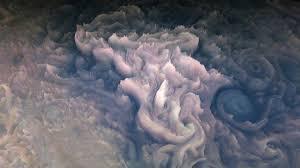
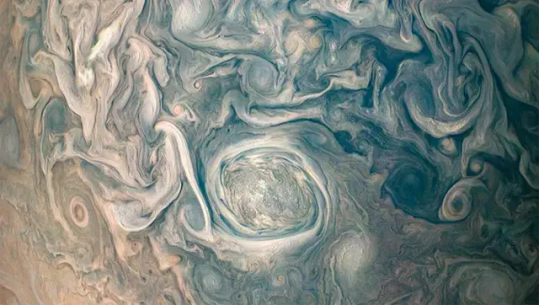
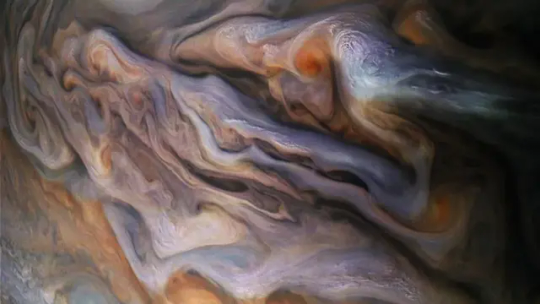

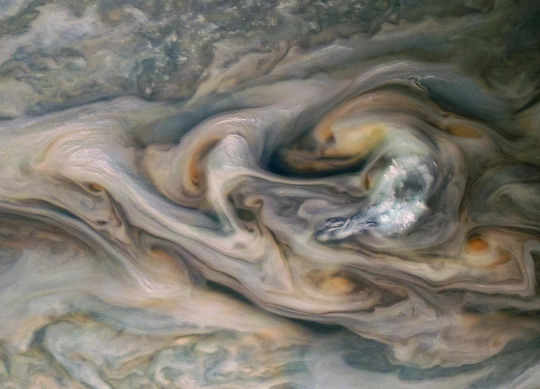
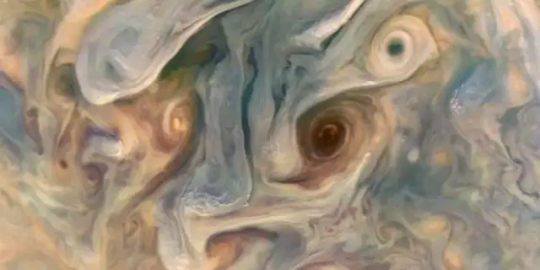
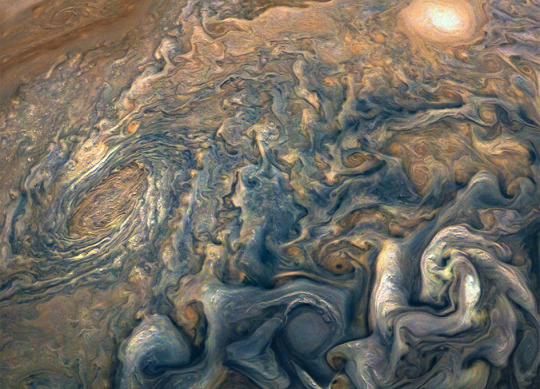
Clouds of Jupiter
535 notes
·
View notes
Text
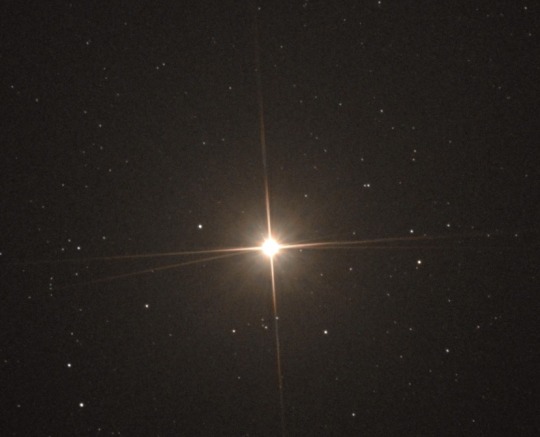

Betelgeuse, one of the brightest stars in the night sky!
#betelgeuse#star photography#starchaser#nasaastronaut#nasa photos#nasawebb#nasa#nasa science#nasa jpl#nasa picture of the day#astronomy#astronomers#universe#astrophotography#astrophysics#outer space#hubble space telescope#international space station#space science#space exploration#space#science facts#planetary science#science#planetary nebula#our universe#solar system#the universe#i love astronomy#astronomy facts
91 notes
·
View notes
Text
Mariner program
The Mariner program was conducted by the American space agency NASA to explore other planets. Between 1962 and late 1973, NASA's Jet Propulsion Laboratory (JPL) designed and built 10 robotic interplanetary probes named Mariner to explore the inner Solar System - visiting the planets Venus, Mars and Mercury for the first time, and returning to Venus and Mars for additional close observations.

The program included a number of interplanetary firsts, including the first planetary flyby, the planetary orbiter, and the first gravity assist maneuver. Of the 10 vehicles in the Mariner series, seven were successful, forming the starting point for many subsequent NASA/JPL space probe programs.
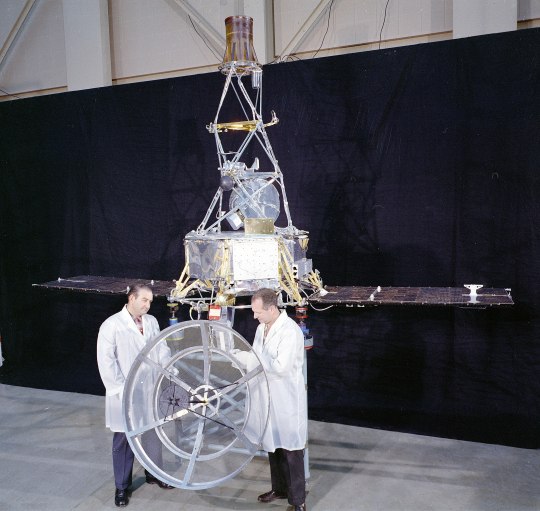
The name of the Mariner program was decided in "May 1960-at the suggestion of Edgar M. Cortright" to have the "planetary mission probes ... patterned after nautical terms, to convey 'the impression of travel to great distances and remote lands.'" That "decision was the basis for naming Mariner, Ranger, Surveyor, and Viking probes."

Each spacecraft was to carry solar panels that would be pointed toward the Sun and a dish antenna that would be pointed at Earth. Each would also carry a host of scientific instruments. Some of the instruments, such as cameras, would need to be pointed at the target body it was studying. Other instruments were non-directional and studied phenomena such as magnetic fields and charged particles. JPL engineers proposed to make the Mariners "three-axis-stabilized," meaning that unlike other space probes they would not spin.

Mariner 1 and Mariner 2
Mariner 1 and Mariner 2 were two deep-space probes making up NASA's Mariner-R project. The primary goal of the project was to develop and launch two spacecraft sequentially to the near vicinity of Venus, receive communications from the spacecraft and to perform radiometric temperature measurements of the planet. A secondary objective was to make interplanetary magnetic field and/or particle measurements on the way to, and in the vicinity of, Venus.

Animation of Mariner 2's trajectory from August 27, 1962, to December 31, 1962. Mariner 2 · Venus · Earth.
Mariners 3 and 4
Sisterships Mariner 3 and Mariner 4 were Mars flyby missions.
Mariner 3 was launched on November 5, 1964, but the shroud encasing the spacecraft atop its rocket failed to open properly and Mariner 3 did not get to Mars.
Mariner 4, launched on November 28, 1964, was the first successful flyby of the planet Mars and gave the first glimpse of Mars at close range
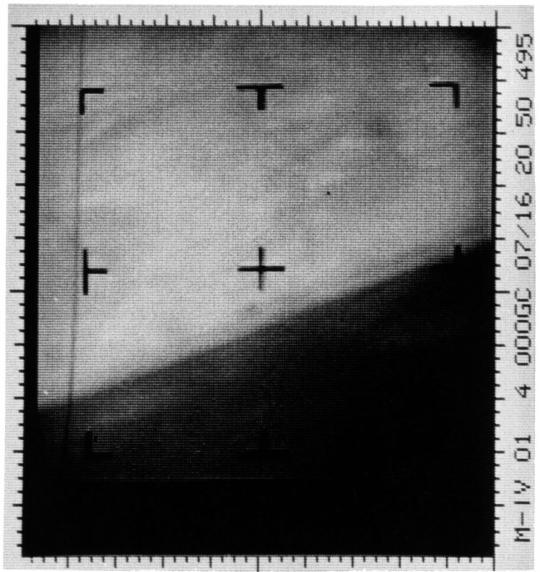
This archival image is an enhanced contrast version of the first Mars photograph released on July 15, 1965. This is man's first close-up photograph of another planet -- a photographic representation of digital data radioed from Mars by the Mariner 4 spacecraft. Data was either sent to Earth immediately for acquisition or stored on an onboard tape recorder for later transmission.
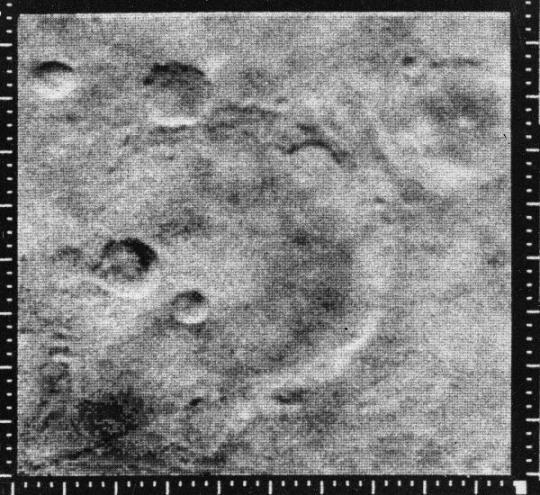
The pictures, played back from a small tape recorder over a long period, showed lunar-type impact craters (just beginning to be photographed at close range from the Moon), some of them touched with frost in the chill Martian evening.
Mariner 5
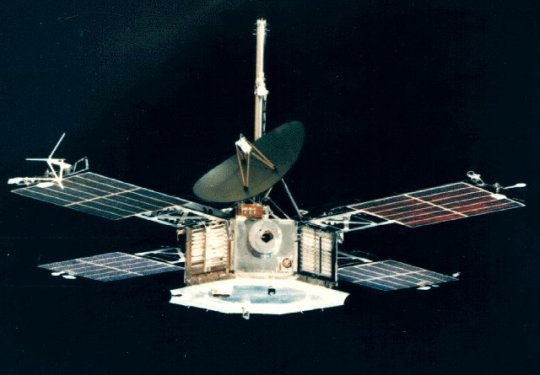
The Mariner 5 spacecraft was launched to Venus on June 14, 1967, and arrived in the vicinity of the planet in October 1967. It carried a complement of experiments to probe Venus' atmosphere with radio waves, scan its brightness in ultraviolet light, and sample the solar particles and magnetic field fluctuations above the planet.
Mariners 6 and 7
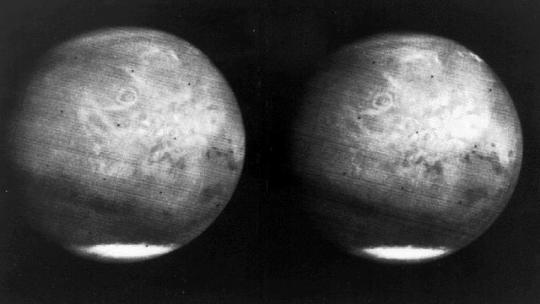
Mariners 6 and 7 were identical teammates in a two-spacecraft mission to Mars. Mariner 6 was launched on February 24, 1969, followed by Mariner 7 on March 21, 1969. They flew over the equator and southern hemisphere of the planet Mars.
Mariners 8 and 9
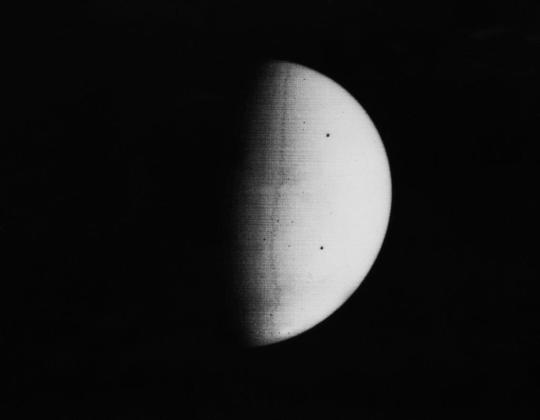
Mariner 8 and Mariner 9 were identical sister craft designed to map the Martian surface simultaneously, but Mariner 8 was lost in a launch vehicle failure. Mariner 9 was launched in May 1971 and became the first artificial satellite of Mars.
Mariner 10

The Mariner 10 spacecraft launched on November 3, 1973, and was the first to use a gravity assist trajectory, accelerating as it entered the gravitational influence of Venus, then being flung by the planet's gravity onto a slightly different course to reach Mercury. It was also the first spacecraft to encounter two planets at close range, and for 33 years the only spacecraft to photograph Mercury in closeup.
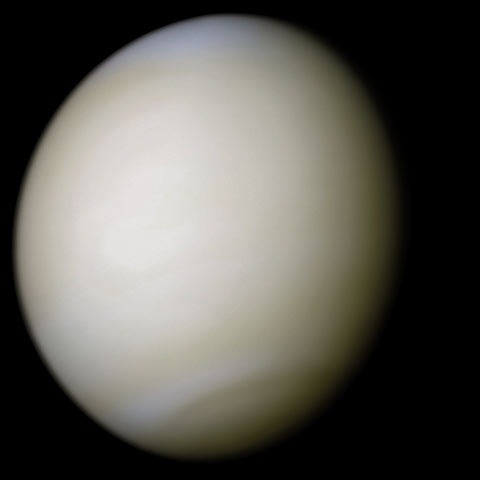
Venus in real colors, processed from clear and blue filtered Mariner 10 images

Mariner 10's photograph of Venus in ultraviolet light (photo color-enhanced to simulate Venus's natural color as the human eye would see it)

This mosaic shows the planet Mercury as seen by Mariner 10 as it sped away from the planet on March 29, 1974.
source x, x | images x
#mercurio#mercury#venus#mars#marte#astronomy#astronomia#space#solarsystem#sistemasolar#universe#universo#mariner#mission#space exploration
70 notes
·
View notes
Text
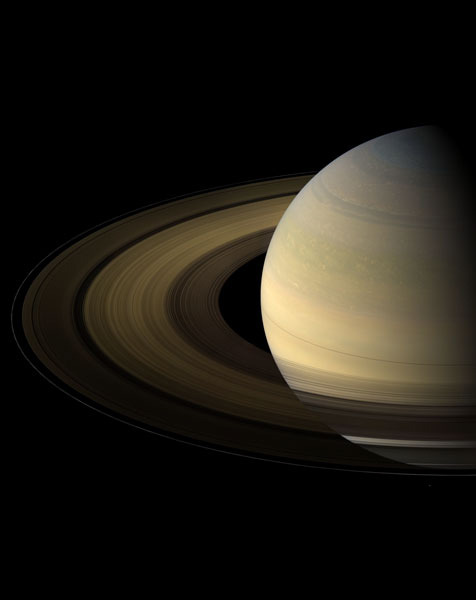
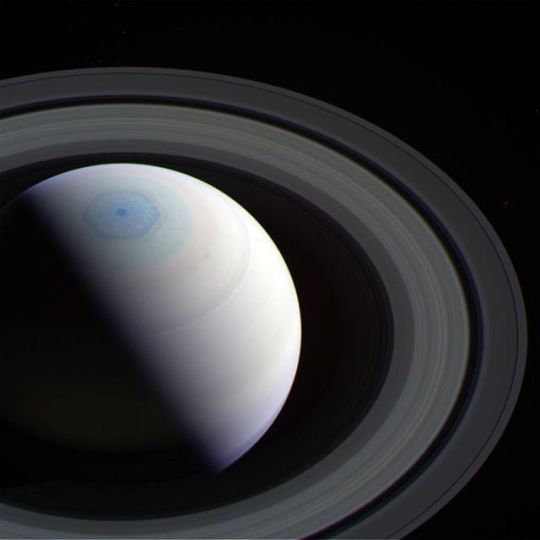
Saturn in our solar system
#saturn#cassini#solar system#space#astrophotography#nasa#planets#universe#astronomy#stars#night sky#cosmos#galaxy
307 notes
·
View notes